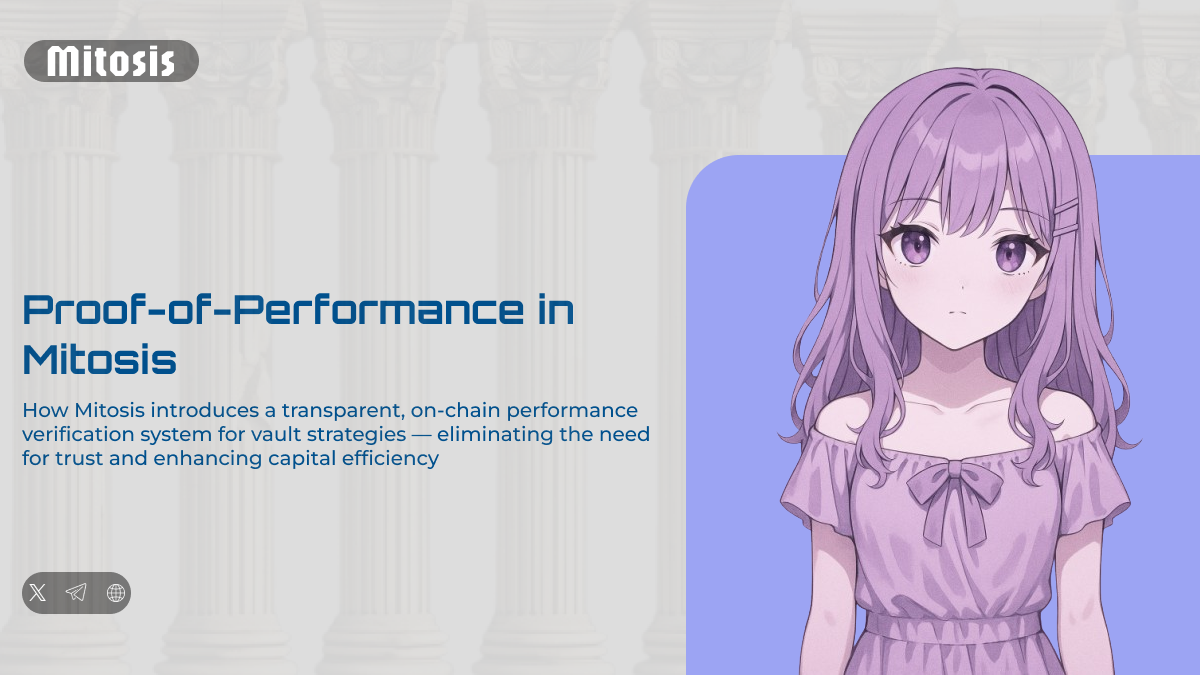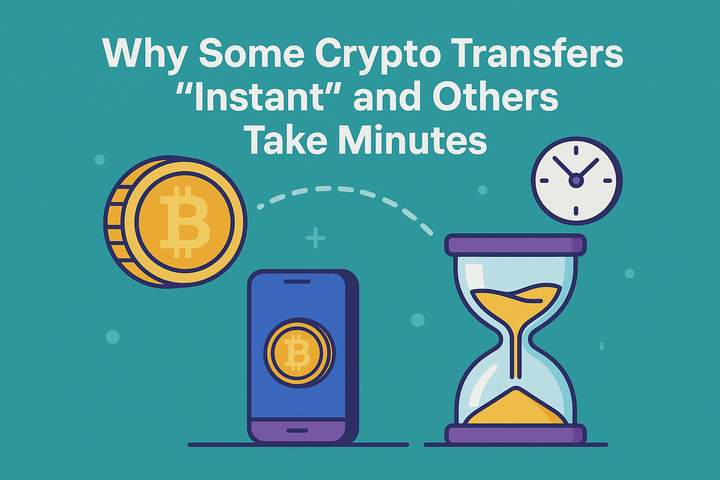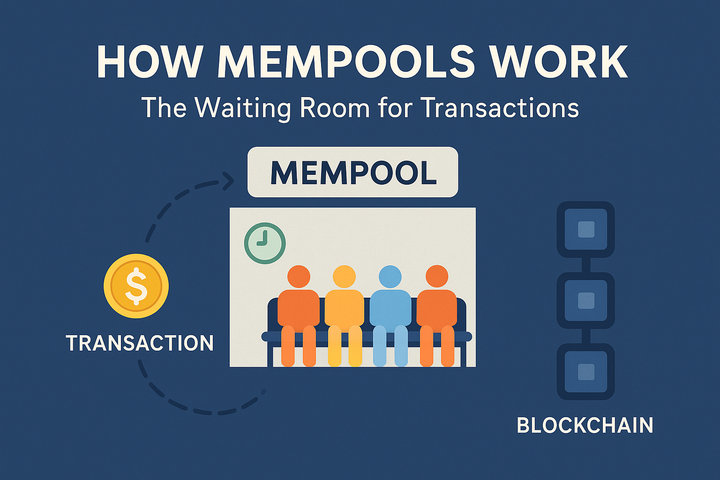🧬 Proof-of-Performance in Mitosis: Trustless Yield Tracking for DeFi Vaults

How Mitosis introduces a transparent, on-chain performance verification system for vault strategies — eliminating the need for trust and enhancing capital efficiency.
🔍 What Is Proof-of-Performance?
In traditional finance, investment performance is often opaque, requiring trust in centralized parties. In DeFi, transparency is essential — and Mitosis has introduced a groundbreaking solution: Proof-of-Performance (PoP).
Proof-of-Performance is an on-chain verification system that enables vault users to independently verify the historical performance and logic of yield strategies — directly from the blockchain.
🔗 Explore Mitosis vault documentation
🔗 What is Matrix Vault Architecture
🔗 Read about the launch of Theo Straddle Vault
🧠 Why Is It Important?
In yield-bearing vaults, users face a key question: Can I trust the strategy?
Mitosis answers this by removing the need for trust entirely. Thanks to Proof-of-Performance:
- 📈 Users see exactly how a vault performed
- 🔍 All trades and allocations are transparent
- 🧾 Smart contract logic is auditable and open-source
- 👁️ No black-box behavior or centralized interference
This system supports user confidence and capital inflow while promoting governance accountability.
🔗 Understanding Smart Contract Strategies
🔗 Compare to Ecosystem-Owned Liquidity (EOL)
🔗 How It Works on Mitosis
1. Vault Composition
Each Matrix Vault (like the Theo Straddle Vault) contains:
- A strategy logic (e.g., delta-neutral arbitrage)
- Asset allocation history
- Automated trade execution
All of these components are verified via on-chain data and exposed through Mitosis dashboards.
2. On-Chain Tracking
The protocol provides proof hashes, which allow any user or auditor to confirm:
- When trades were made
- What positions were held
- What yields were generated
🔗 Learn more in the Mitosis Technical Docs
🔗 Dashboard Preview
3. Permissionless Auditing
Anyone can plug into the smart contracts, retrieve historical state, and verify outcomes. This enables:
- Third-party analytics
- DAO governance reviews
- Risk modeling and performance scoring
🛡️ Advantages Over Traditional Vaults
| Feature | Traditional Vaults | Mitosis Vaults with PoP |
|---|---|---|
| Strategy Transparency | Limited | Full smart contract logic |
| Performance History | Often off-chain | On-chain, provable |
| Trust Required | Yes | No (trustless) |
| DAO Oversight | Minimal | Enforced by smart contracts |
🔗 Vault Transparency Explained
🔗 Why DeFi Needs Better Proofs
⚙️ Use Case: Theo Straddle Vault
The Theo Straddle Vault was the first live deployment of a strategy using Proof-of-Performance. It combined:
- Spot-long + Perp-short positions
- Algorithmic delta-neutral management
- Real-time user dashboards showing yield curves
All data was verifiable — a paradigm shift compared to traditional black-box yield protocols.
🔗 Theo Straddle Vault Campaign
🔗 How Delta-Neutral Strategies Work
🌐 Governance and DAO Integration
All performance proofs are monitored and governed by the Mitosis DAO. This includes:
- Vault creation and strategy approval
- Smart contract upgrade proposals
- Fee structure adjustments based on performance
The DAO can vote to disable underperforming vaults or boost those with strong track records.
🔗 Explore Morse DAO Governance
🔗 Governance Parameters Overview
🔗 Vault Listing Criteria
🔮 What’s Next for Proof-of-Performance?
Mitosis is already working on:
- Automated risk-scoring layers
- ZK-proof extensions for performance
- AI-based vault comparison tools
- User reputation staking via verified strategy use
These will bring institutional-level reliability to everyday DeFi users.
🔗 Latest Research Papers
🔗 Mitosis Roadmap
🔗 Follow updates on X
📚 Conclusion
The Mitosis Proof-of-Performance system changes how we think about DeFi vaults. Instead of believing that a vault performs, users can prove it. With smart contracts, on-chain transparency, and DAO governance, Mitosis sets a new standard for composable, trustworthy DeFi infrastructure.
Start exploring live strategies at:
🔗 app.mitosis.org
🔗 Full Documentation
🔗 University Article Hub



Comments ()